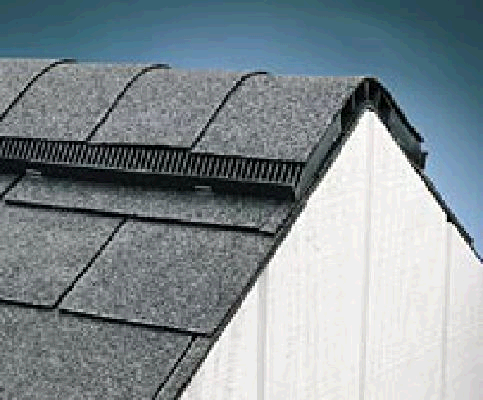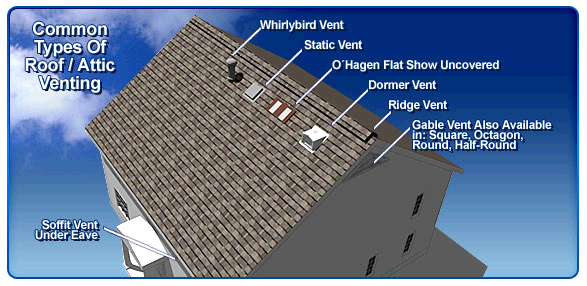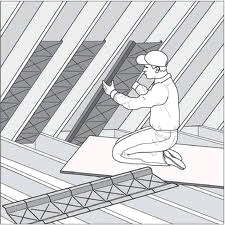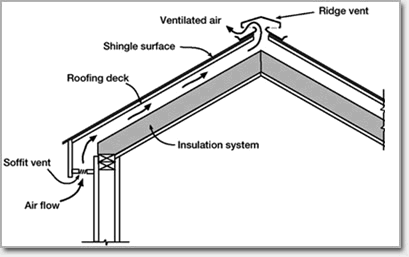Posts Tagged ‘soffit’
Resuscitating the roof: Providing adequate roof ventilation.
Proper ventilation is an important; often overlooked, contributor to roof health. Controlling the temperature of the roof with ventilation will increase the life of roof coverings (e.g. shingles), as well as help prevent roof damaging problems like ice dams.
To control the temperature of the roof, ventilation is key. You’ll want outside air to be able to flow along the underside of the roof, and warm moist air to be able to escape from under the roof. “But wait… I want to insulate my roof to keep my heat in” you might say “How can I insulate the roof, and still keep proper air flow?“. Hold on to your britches, we’ll get to that. But first, we have to talk about roof vents.
Roof vents
When the sun beats down on the roof the roof becomes hot (obviously), this heats the air under the roof. Our first step to ventilating the roof, is to get this hot air out from under it. We can get some help here since warm air is less dense than cold air, so it will rise naturally. To allow all this rising air to escape, we’ll want to install some roof vents. These can be either a vent on the face of the roof near the ridge,
or a Ridge Vent.
Roof vents come in all shapes and sizes, so it shouldn’t be a problem finding one that looks good on your house.
So now we have a way for the hot air to escape from under the roof, but that air has to be replaced by air from somewhere else, right? That’s where Soffit Vents come in.
Soffit (Eave) vents
Soffit vents can be actual vents; like those you would see on the walls or floors of a home with forced air heating,
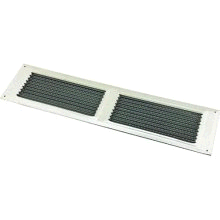
or slits or holes cut into the soffit covers themselves.
These allow cooler outside air to flow up under the roof, to replace the warm air that is escaping thought the roof vents.
“But I still want insulation in the roof! How can air flow from the soffit vent to the roof vent, if I have insulation?“. Alright, don’t get so excited. This is where baffles come in.
Baffles
Baffles are long U shaped pieces of plastic or foam, that are secured to the underside of the roof decking between the rafters.
They allow air to flow freely between the roof and the insulation under the roof, by creating an unrestricted channel under the roof decking. This allows you to install insulation in the roof, while not blocking the flow of air under the roof.
Baffles are installed by nailing or stapling them to the underside of the roof decking, between the rafters like this.
The baffles can then be covered with the insulation of your choosing.
If you are not going to install insulation in the rafters, you may only have to install baffles at the lower end of the roof or not at all. You’ll want to make sure air can get from the soffit vents into the rafter voids, so you may need short baffles to run from the soffit past the insulation in the joists of the attic floor. In this case, the baffles do not have to run the entire length of the rafter void.
Let the air flow
OK, so now we have cool air flowing into the soffit vent, warm air coming out the roof vents, and an open passage to allow the air to flow from soffit vent to roof vent.
“But how does that make the roof healthier?” you might ask. Well, now that you have good ventilation the roof will stay cooler in the summer (hot months). This will help the roof covering last longer, by preventing it from getting as hot as it would without ventilation. In the winter (cold months), ventilation will keep the roof colder helping to prevent problems such as ice dams.
Ice Damming
Ice dams form when snow melts on a warmer section of roof, the water then flows down the roof until it reaches a colder section of roof (usually above the soffit) where it re-freezes. Eventually the freezing water will create a ridge, which will catch more water, which creates a larger ridge. Until finally, you have a dam of ice that prevents water from draining off the roof.
Once this happens, water can backup under the roof covering leading to water infiltration.
A happy roof, makes a happy homeowner
So, now that you have good roof ventilation. Your roof coverings should last longer, and the house should be slightly cooler in the summer. Ice dams, and dangerous icicles will be less likely to form. And you’ll likely notice savings in your heating and cooling bills, which is always a good thing.


